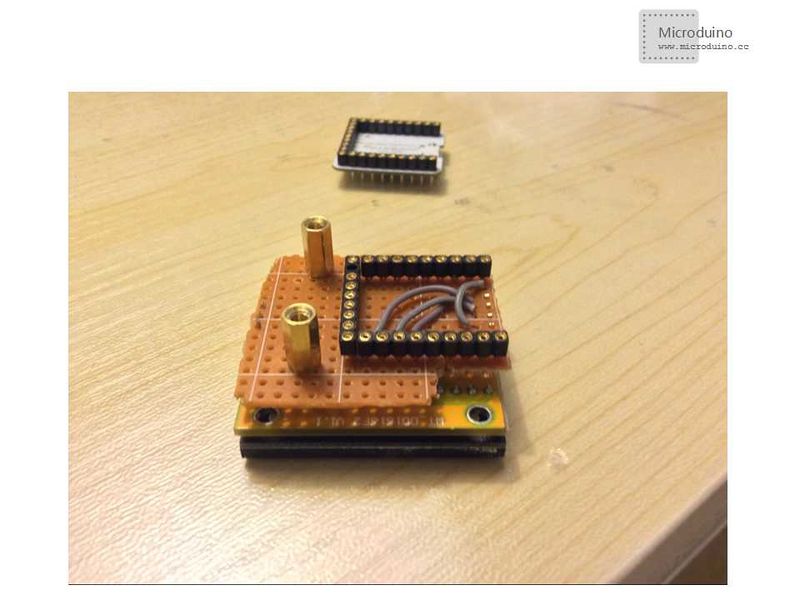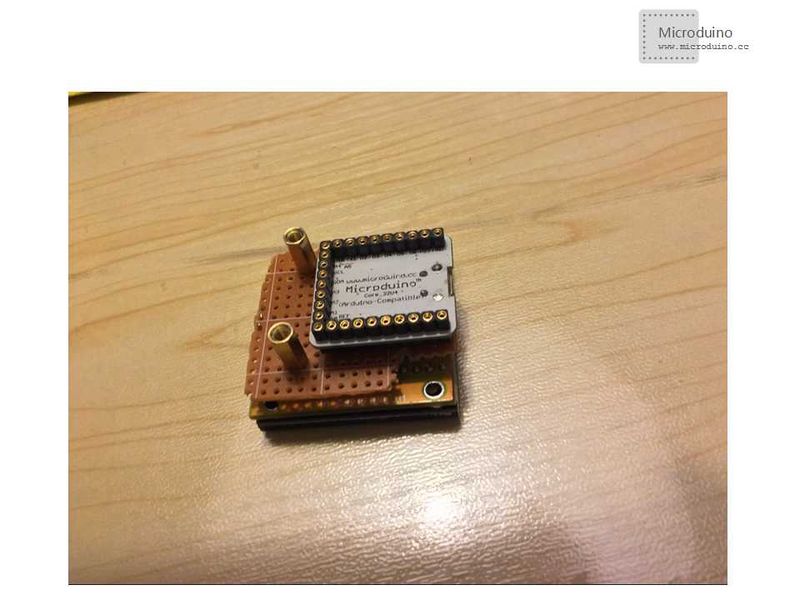Difference between revisions of "Lesson 31--Microduino 16*16 Lattice Character Static Display"
(Created page with "{{Language | 第三十一课--Microduino 16*16点阵汉字静态显示}} {| style="width: 800px;" |- | ==Objective== LM-2256 series of 16*16 lattice, its size is 40.46*40.46*5...") |
|||
| Line 4: | Line 4: | ||
| | | | ||
==Objective== | ==Objective== | ||
| − | LM-2256 series | + | Designed for LM-2256 series 16 *16 dot matrix, its size is 40.46*40.46*5mm.The size of each LED lamp is 2.0mm. Using four 74ls595 chips to control it, so you only need three pins to control 256 lights, which is enough to show a Chinese character not only just simple letters or numbers. |
| − | This experiment | + | This experiment combines Minroduino modules and the lattice, making it beautiful and compact. |
==Equipment== | ==Equipment== | ||
*'''[[Microduino-Core]]''' | *'''[[Microduino-Core]]''' | ||
Revision as of 11:04, 3 March 2016
| Language: | English • 中文 |
|---|
ContentsObjectiveDesigned for LM-2256 series 16 *16 dot matrix, its size is 40.46*40.46*5mm.The size of each LED lamp is 2.0mm. Using four 74ls595 chips to control it, so you only need three pins to control 256 lights, which is enough to show a Chinese character not only just simple letters or numbers. This experiment combines Minroduino modules and the lattice, making it beautiful and compact. Equipment
DocumentLM-2256 Series 16 *16 matrix displays:File:.led 16 16.zip Features
DebugWelding circuitStep 1:Cut pegboard; Step 2:Design the position of Microduino base plate, then Welding Microduino base plate; Step 3:Fix the pegboard and lattice, and then plus studs for fixed; Step 4:Welding control pin:
Program
Step 1:Download test program, and then open it; Step 2:Compile it and then select the board to download, after download, you can see a Chinese character "Ya" (雅); Step 3:Change the font; Note:Change the modulus method to:Determinant, yang code, reverse. After finished, download directly. Detailed information, please refer to :http://www.microduino.cc/wiki/index.php?title=%E7%AC%AC%E4%BA%8C%E8%AF%BE--Microduino_OLED%E4%BD%BF%E7%94%A8/zh ResultThrough the test, it can display a Chinese character staticly, and each LED light's brightness is uniform, and beautiful. ExtensionIn this experiment, we used Microduino-Core and Microduino Ft232R, thickness is a little big。If use the Microduino-32U4 (Instead Microduino-Core and Microduino Ft232R), the thickness will be decreased. Issue need to pay attention
Video |






